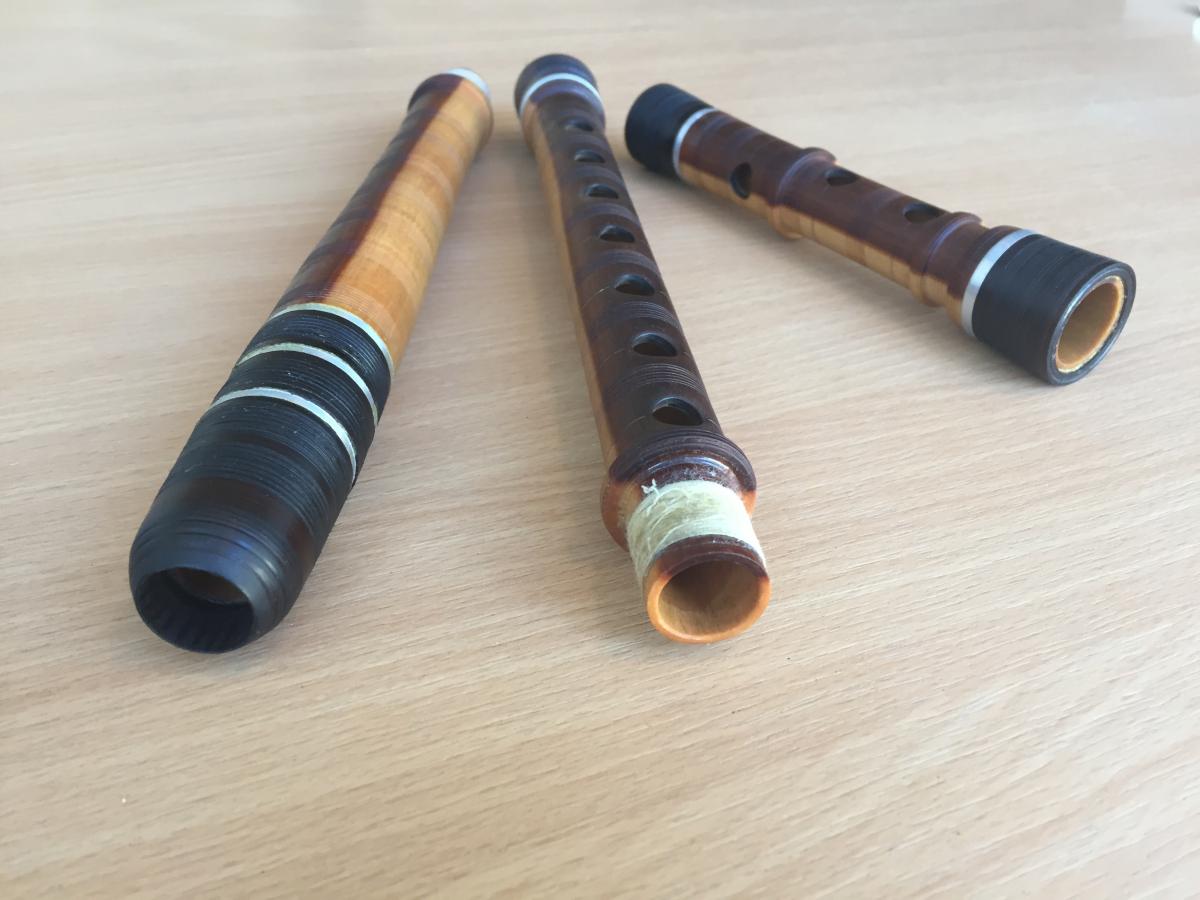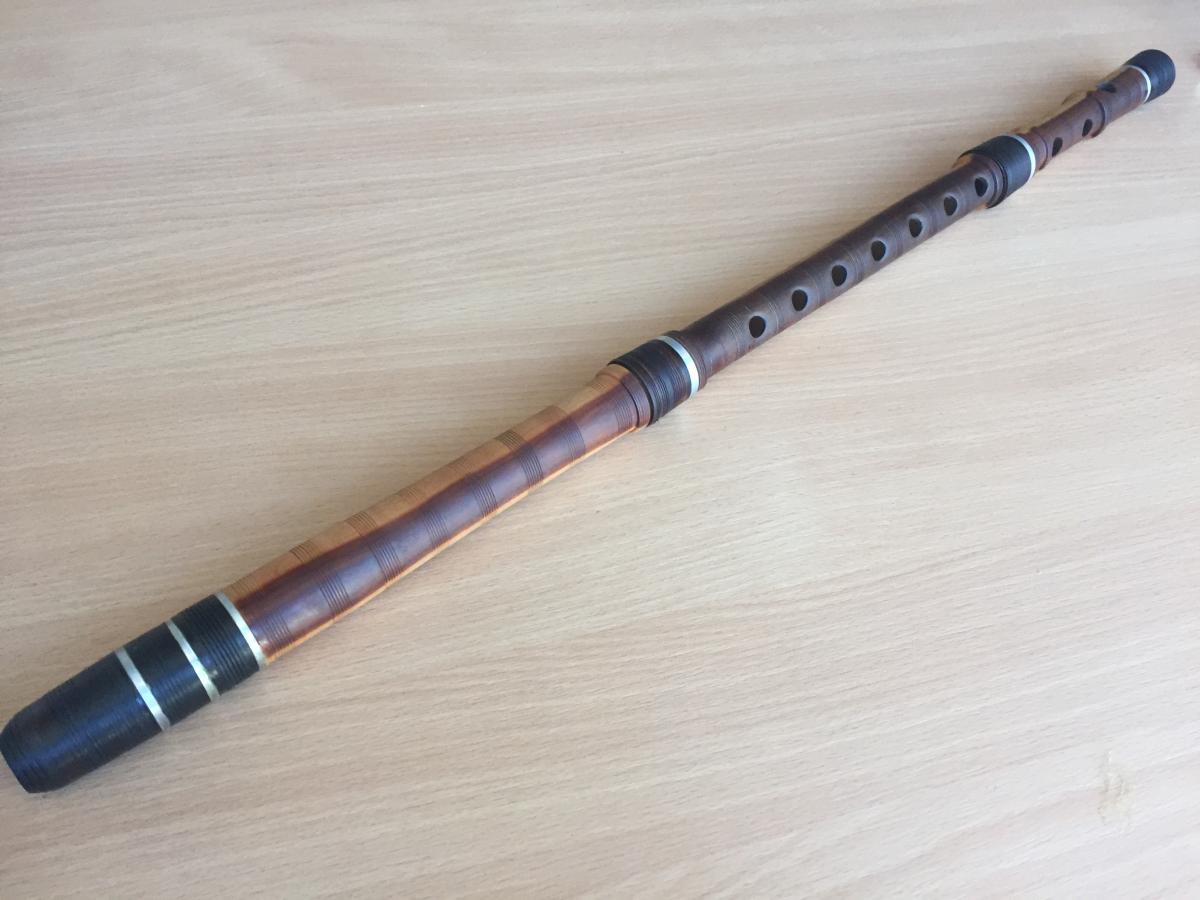
The most common kaval is a D kaval, which when assembled is approximately the length of my arm from shoulder to extended middle finger. The instrument is made out of wood, though it sometimes has a bone mouthpiece or tenons. These tenons are the connection points or sockets at which the instrument can be separated into three pieces for easier storage and transportation. The middle segment of the instrument has eight note holes – one for each finger except the left hand little finger and the right hand thumb. There are additional holes in the bottom segment of the instrument, but these are for acoustic purposes rather than pitch alteration.
Rather than blowing perpendicularly across the opening, as in a transverse flute, sound is produced on kaval by pursing one’s lips inside the mouthpiece and then tilting the instrument to the right to allow the air to be split across the left edge of the hole. The embouchure, or lip position, is forward and round, with a fairly small opening like what is used for whistling. Finding the correct position to make a first sound is notoriously difficult – I have heard of people who have needed to work for weeks (or months) to even get a single sound. For me, after I was able to make a sound, it took over a mo
Psychoacoustically, the primary feature by which listeners identify an instrument is the attack, or beginning, of its sound. There have been studies that have proven it is quite difficult to distinguish between different instruments when that portion of the sound is edited out of a recording. I would go further and propose that, at least within the flute family, ornamentation is also central in giving an instrument its signature sound. Then again, since there is arguably a grey area between articulation and ornamentation, this may not be entirely surprising.
My focus since I arrived in Plovdiv has been on the Thracian style of playing. Not only is Plovdiv in Thrace, but this style and repertoire also became the most widely disseminated through the government-controlled arts-nationalism of the second half of the 20th century. In the Thracian style, I have so far encountered the following types of ornamentation: vibrato, grace note, mordent, glissando, hlopka, accent, eko, and kaba. In my next post, I will break down each of these in more detail.
I am not a master kaval player. I hope you will keep that in mind if/when I post recordings of myself playing on this blog! I had never even heard of the instrument until about 16 months ago, when I followed the trail of Romanian panpipes into other flutes of the Balkans. However, lucky for me, several master kaval players do have recordings on youtube, so I can share some of their music with you here :). Some of the most famous kaval players include Stoyan Velichkov, Nikola Ganchev, Stoyan Chobanov, and others.
Here, for example, is a great old video of Nikola Ganchev playing. I'm not sure if he's playing a higher kaval or if he's just large enough that the kaval looks small in his hands ;)
[1] I’m using the word “traditional” here for the sake of simplicity, though I do recognize the problematic (ahistorical, colonial, racist, classist, etc.) implications of dividing music into “traditional” versus... what contrasting word could I use here? “imported”?